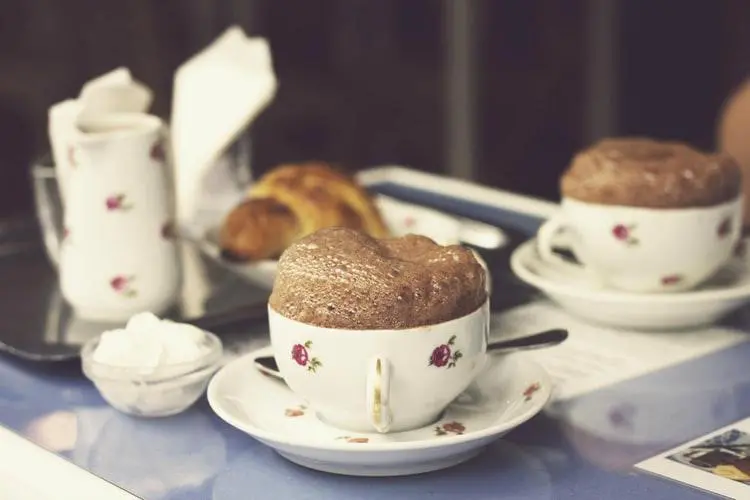Summary of our market study
French consumption of ceramics is estimated at around 500 million euros.
The global porcelain tableware market is worth over $25 billion.
European regulation 1935/2004 guarantees that the materials used in porcelain do not compromise consumer health, and customs duties of 17.9% have been introduced to protect the market.
Demand for porcelain in France
Consumption of ceramic tableware is tending to slow down.
Porcelain is a symbol of luxury and tradition. It is a niche market. Limoges porcelain is world-renowned for its quality. The value of French production of Limoges porcelain tableware is estimated at around €100 million.
Fewer and fewer French families are gathering around the dinner table.
French preferences are shifting towards practicality and modern aesthetics. People over 55 continue to use porcelain tableware for special occasions (around 25%). Less than 15% of 24-34 year-olds own special-occasion crockery.
Counterfeit products are very present on the market.
Colored porcelain accounts for 80% of sales, while white porcelain represents only around 20%.
The French porcelain industry faces stiff international competition, particularly from Asia. The number of employees in the sector is steadily declining.
The prestigious craftsmen of French porcelain
In the landscape of French luxury and artisan heritage, several names stand out as standard-bearers of porcelain excellence.
- Bernardaud: A beacon of porcelain innovation, Bernardaud's foundations were laid in 1863. The brand is recognized worldwide.
- Royal Limoges: Considered the oldest porcelain house, Royal Limoges was founded in 1797. It has the last large round kiln in France, uses driftwood to heat its kilns and operates its own kaolin quarries.
- Haviland: Founded in 1842, market leader in decorative table porcelain.
- Jacques Pergay: A relatively young player in Limoges porcelain, founded in 1993.
to understand this market
Detailed content of our market study
 Inforamtion
Inforamtion
- Number of pages : 35 pages
- Format : Digital and PDF versions
- Last update :
 Summary and extracts
Summary and extracts
1 Market overview
1.1 Introduction and scope of study
Porcelain is a fine, translucent ceramic produced from kaolin by firing at over 1200°C. The primary use of porcelain is for tableware. There are two main types of porcelain: hard and soft. Advanced porcelain manufacturing techniques arrived late in France (19th century), although they were already present in China in the 17th century. Nevertheless, Limoges porcelain is recognized for its quality and is even protected by a "geographical indication".
Since 2010, the number of employees in the French porcelain industry has been steadily declining, reflecting the fact that manufacturing processes are increasingly being outsourced outside France. Sales generated by the porcelain market are being severely tested by the boom in ceramic tableware in China, which is gradually replacing traditional porcelain.
To withstand the crisis, players in the porcelain market are banking on the development of exports, which already account for almost 50% of the sector's sales. However, with changes in Chinese demand, the structure of exports to customer countries has been weakened.
The French porcelain market has to contend with intensifying international competition, particularly from Asia, which is regularly illustrated by the use of counterfeit products. The city of Limoges has taken steps to secure recognition of the brand at national and European level.
All our studies are available online in PDF format
Take a look at an example of our research on another market!
 Choosing this study means :
Choosing this study means :
Access to more than 35 hours of work
Our studies are the result of over 35 hours of research and analysis. Using our studies allows you to devote more time and added value to your projects.
Benefit from 6 years' experience and over 1,500 industry reports already produced
Our expertise enables us to produce comprehensive studies in all sectors, including niche and emerging markets.
Our know-how and methodology enable us to produce reports that offer unique value for money.
Access to several thousand articles and paid-for data
Businesscoot has access to all the paid economic press as well as exclusive databases to carry out its market research (over 30,000 articles and private sources).
To enhance our research, our analysts also use web indicators (semrush, trends, etc.) to identify market trends and company strategies. (Consult our paying sources)
Guaranteed support after your purchase
A team dedicated to after-sales service, to guarantee you a high level of satisfaction. +44 238 097 0676
A digital format designed for our users
Not only do you have access to a PDF, but also to a digital version designed for our customers. This version gives you access to sources, data in Excel format and graphics. The content of the study can therefore be easily retrieved and adapted for your specific needs.
 Our offers :
Our offers :
the porcelain market | France
- What are the figures on the size and growth of the market?
- What is driving the growth of the market and its evolution?
- What is the positioning of companies in the value chain?
- Data from several dozen databases
Pack 5 études (-25%) France
- 5 études au prix de 74 €HT par étude à choisir parmi nos 1200 titres sur le catalogue
- Conservez -25% sur les études supplémentaires achetées
- Choisissez le remboursement des crédits non consommés au terme des 12 mois (durée du pack)
Consultez notre catalogue d’études sectorielles


















